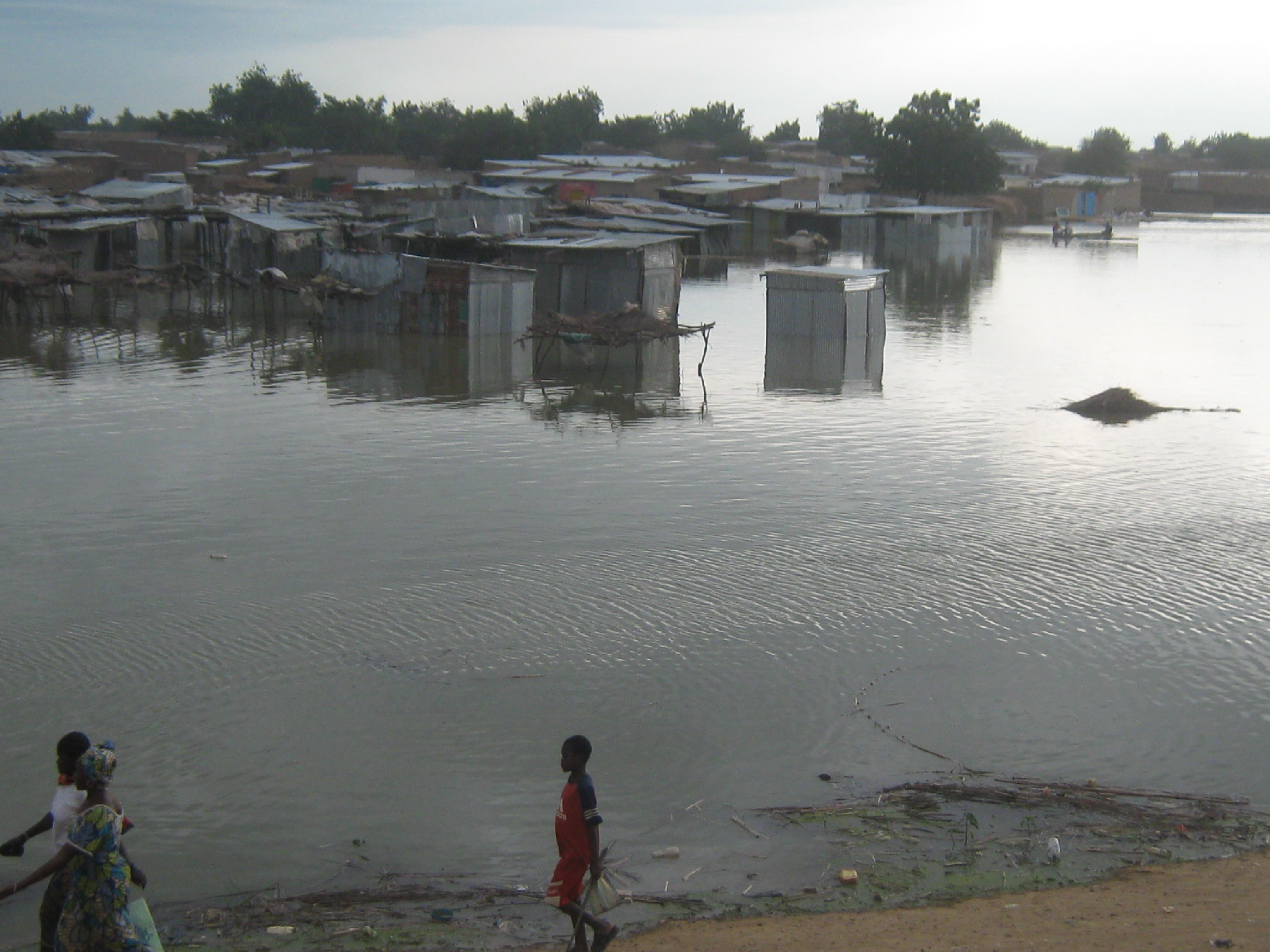Water is still rising from late September when the Chari burst its banks and swallowed up homes in riverbank communities. Residents and experts say similar overflows happened in 1988 and in 1998, but that this flooding is the worst.
The government has said it plans to relocate riverbank communities. Some residents - still putting up sandbags and chunks of their broken homes to block the water - want solutions that will allow them to stay put.
But that is not viable, Chad Communications Minister Kalzeubé Payimi Deubet told IRIN. “Relocation is the soundest option. Otherwise these communities would see the same destruction again and again. It is a danger for all of N’djamena if we don’t stabilize that area.”
After the recent overflow, the water rose so that it began to reach higher parts of N’djamena via canals. “You had a situation where experts observed the flow reversed - instead of water from the city feeding the river, the river started pushing into the city,” UN Children’s Fund (UNICEF) representative Marzio Babille told IRIN.
In a 25 October visit to the neighbourhood of Walia in the south of the capital, President Idriss Deby said the government would set up a higher, dryer area where residents would relocate.
“These populations must abandon the riverbeds of the Chari and Logone rivers,” Deby said. Logone also flows through the capital and into Lake Chad.
Some residents are too attached to their land and prefer to stay, Ngolfou Pierre, head of a Walia neighbourhood flood-response committee, told IRIN.
“We will analyse different options for keeping people here, such as building dykes, and present these to the government.
“We appreciate the president coming here to see the situation first-hand, and his wanting to seek solutions. It was clear that he was moved by seeing this population living in water. We have to look at both options - staying or going. But such a decision must not be made based on emotion but on a solid analysis.”
“Quick response… is saving lives”
In Chad and worldwide, particularly with climate change, it is critical that governments and communities work to ensure sound, sustainable management of natural resources, said Sandjima Dounia, secretary-general of Chad’s Environment and Water Resources Ministry.
“It is a phenomenon everywhere. Often people do not respect geography and the waterways, and they build in these riverbank areas. It poses a problem for the communities and for the state, which must ensure proper development...along the river, explaining the flood risk to the population.”
Dounia took part in a 29-31 October sustainable development forum in N'djamena, the theme of which was “Saving Lake Chad”. River management was one of the topics covered.
UNICEF is bringing in hydraulic engineers and floodgate specialists from Sweden, France and Egypt in the coming days, according to Babille.
“A sound, quick response to the emergency is preventing the spread of disease and saving lives,” he told IRIN. “But at the same time you must have solid mid- and long-term planning to manage the river, use pumping stations, construct effective drainage systems and provide proper sanitation.”
An inter-agency (UN and NGOs) group is exploring medium- and long-term solutions for the communities bound to be hit repeatedly by flooding.
It is calling for lasting solutions, “because the rise of the Chari and the Logone is a cyclical phenomenon”, according to a report on a 22 October mission to the area. The group recommends the construction of canals and dykes to protect the riverbanks, the relocation of people living in flood-prone areas and a ban on further construction there.
np/dd/cb
This article was produced by IRIN News while it was part of the United Nations Office for the Coordination of Humanitarian Affairs. Please send queries on copyright or liability to the UN. For more information: https://shop.un.org/rights-permissions





